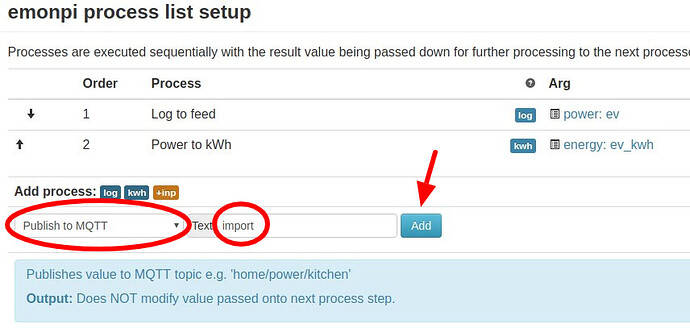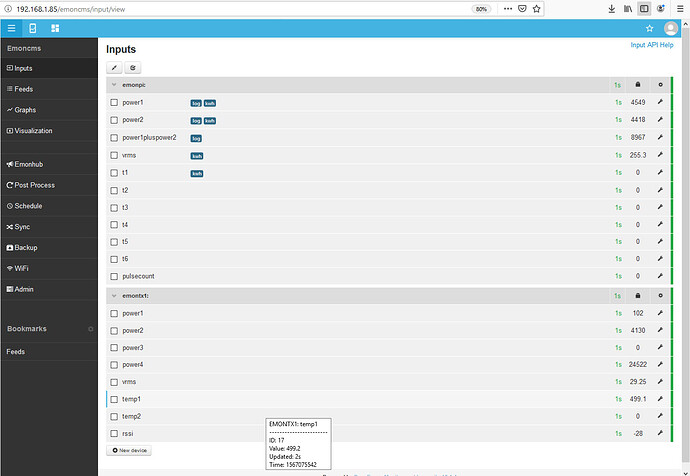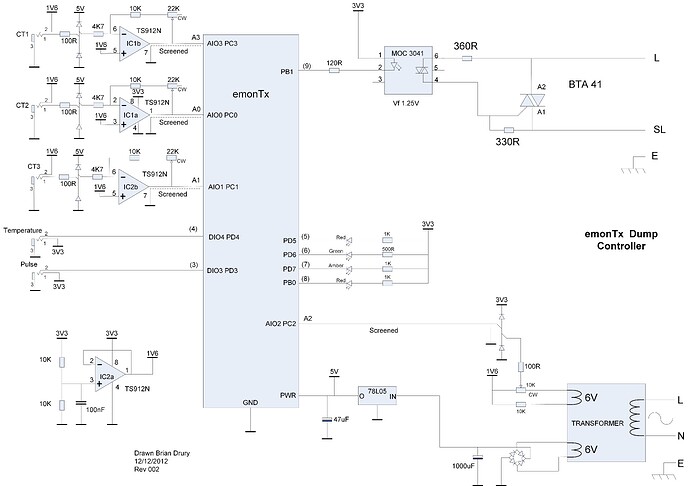Apologies for the absence, I’ve not been around much the last few days . I’ve just got in and hoping to eat before hitting the road again in an hour so I’m just posting to say I haven’t abandoned you, I am trying to get to answer your points above. However please don’t invest too much time into it just yet as although that first part is doable, your way is more complex and less accurate than it should be, plus I was going to go on and explain why the diverter (in it’s current configuration) will not play ball with the first part.
Did you find out the info on the diverter payload? group, node id and whether it is in range of the emonpi?
Very quickly regards you last post. emoncms.org is just a hosted version of emoncms that you have on the emonSD. They are different accounts and work independently of each other so if you want to maintain data at home and on the emoncms.org siter you will need to set up the input processing, feeds and dashboarde etc on both accounts. You can send to many different emoncms accounts, both local and remote via emonhub. Your iOS app will be working with which ever host you configured it to point at. You can make changes at any emoncms account via any browser on any machine or via andoid or iOS, the client is immaterial to the host account.
If you want to make things simpler for yourself to begin with, try to use just one host rather than both (or more). Although you can use either to monitor, you would neeed to use the local emoncms if you want to control your EV. AFAIK you cannot do that from emoncms.org (I’m sure someone will correct me if that’s not the case).
I will try and find some time to continue but I’m not sure when that might be exactly, I’ll probably be shattered later and it’s not really a 2min job.


